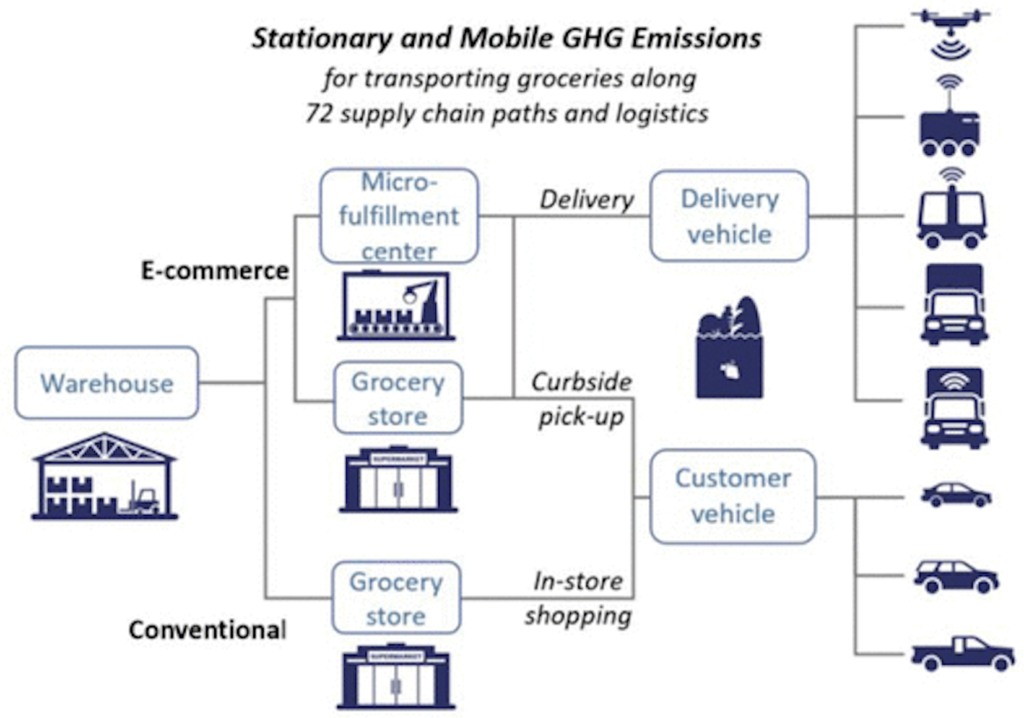The COVID-19 pandemic has accelerated the growth of e-commerce and automated warehouses, vehicles, and robots and has created new options for grocery supply chains.
As shoppers searched for safe and convenient ways to get essential items, grocers adapted to meet increased e-commerce demand. Micro-fulfillment center enabled grocers to quickly fill pickup orders, sometimes within an hour of order placement. Ongoing advances with autonomous vehicles, robots, and drones promise to create new consumer options soon. So, how will all these changes affect the greenhouse gases generated by grocery shopping? Which alternatives produce the most and the least heat-trapping emissions, and what can consumers do to minimize their carbon footprint?
A new paper compares the greenhouse gas (GHG) emissions for a 36-item grocery basket transported along 72 unique paths from a centralized warehouse to the customer, including impacts of micro-fulfillment centers, refrigeration, vehicle automation, and last-mile transportation.
The base case is in-store shopping with last-mile transportation using an internal combustion engine (ICE) SUV (6.0 kg CO2e). The results indicate that emissions reductions could be achieved by e-commerce with micro-fulfillment centers (16−54%), customer vehicle electrification (18–42%), or grocery delivery (22–65%) compared to the base case.

All of the home delivery options had lower emissions than in-store shopping by consumers using an internal-combustion vehicle, reflecting the importance of last-mile transportation emissions. Home delivery by a “sidewalk robot” performed best.
For shoppers who live outside the delivery zone, curbside pickup using an electric vehicle helps lower emissions. Further reductions were achieved by shopping at a grocery store with a micro-fulfillment center and by combining the grocery trip with other errands (trip chaining).
Shopping frequency is an important factor for households to consider; e.g., halving shopping frequency can reduce GHG emissions by 44%. Trip chaining also offers an opportunity to reduce emissions with approximately 50% savings compared to the base case.
The paper identifies and discusses opportunities for grocers and households to reduce grocery supply chain carbon footprints.
